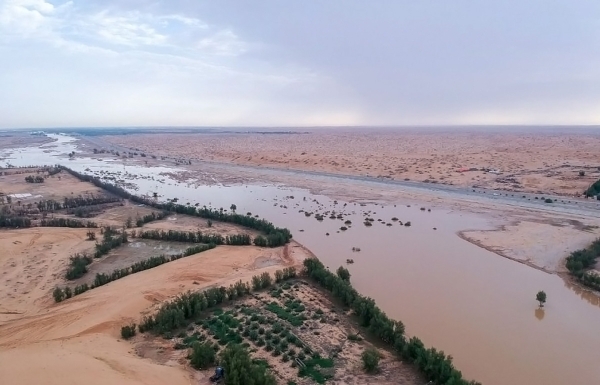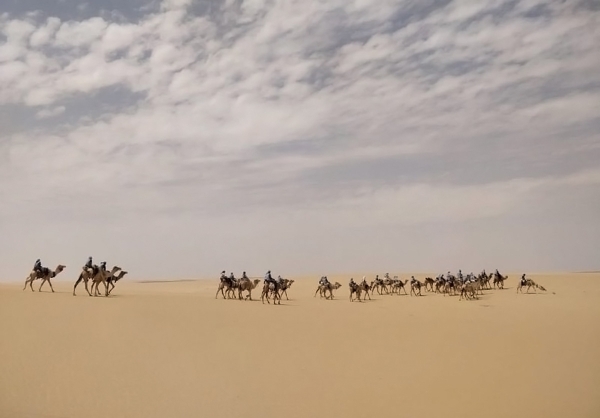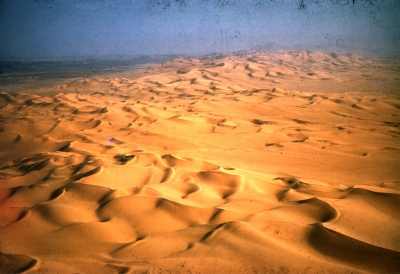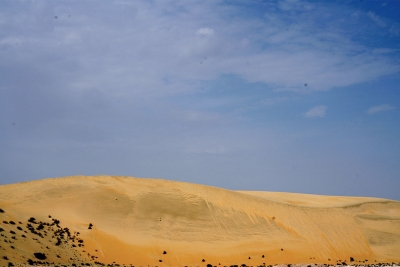

Al-Dahna Desert, or small al-Nafud, is the third-largest desert in the Kingdom of Saudi Arabia, whose boundaries are shared by five administrative regions. Its sand formations begin in the Northern Border Region, and extend downward into the Ha’il Region, then al-Qassim and Riyadh regions, all the way to the Eastern Province.
Area of al-Dahna Desert
Al-Dahna Desert has an area of forty-five thousand km, representing 7.1 percent of the aggregate sand clusters in the Kingdom. Al-Dahna Desert is formed as a 1,200-km-long arched sandbar, the northern fringes of which are connected to the second-largest Sahara of the Kingdom, the Great al-Nafud (al-Nafud al-Kabir) Desert, whereas its southern fringes join with the world's largest erg, the Empty Quarter (Rub' al-Khali) Desert, and enter the Arabian Shelf, the second component of the Kingdom's geology, along with the Arabian Shield.
Height of sand formations in al-Dahna Desert
The highest altitude of red sand formations in al-Dahna Desert is 779 m above sea level, and the highest altitude from the ground is about 120 m.
Keeping in mind the economic importance of the Empty Quarter Desert due to its wealth of oilfields, al-Dahna Desert also has historical, cultural, and touristic significance, as it was a gathering place for the forces of the Founding King Abdulaziz Bin Abdulrahman Al Saud and is the permanent headquarters for the annual tourist festival, the King Abdulaziz Camel Festival.
Nature reserves of al-Dahna Desert
Spread across the sands of al-Dahna Desert are indigenous species reserves, including the Imam Abdulaziz Bin Mohammed Royal Reserve southwest of al-Dahna, with an estimated area of 11,300 km, and the King Abdulaziz Royal Reserve, which contains green gardens covered by trees, shrubs, and weeds and is a prime tourist destination for visitors from inside the Kingdom and abroad during the spring.
Related quizzes
Related articles


